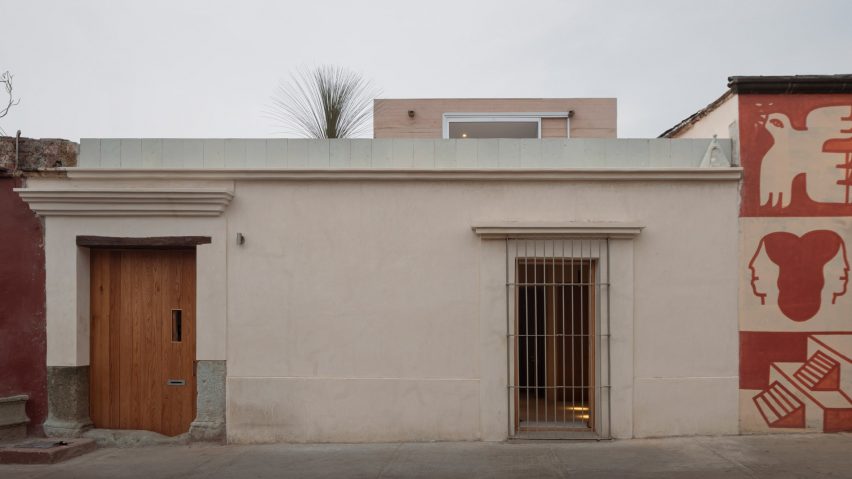Mexican studios Espacio 18 Arquitectura and Cueto Arquitectura have renovated a narrow infill property in Oaxaca, Mexico to create apartments within a space built up with different styles over the years.
Known as Matamoros 402, the building was completed in 2024 with 11 apartments in 785 square metres (8,500 square feet).
Espacio 18 Arquitectura and Cueto Arquitectura collaborated with the National Institute of Anthropology and History (INAH) to rehabilitate the property and generate more multifamily housing in the City of Oaxaca's Historic Center.
"The project is based on the concern of obtaining a relationship between the preexistence and the architectural intervention of the new proposal," the team said.
"Historical elements are recovered to extend their useful life and in parallel structural elements are created to generate tectonics with the new volumes.
The property previously included a rundown portion of a house that was divided by multiple family members. The plot – measuring 9.70 metres (32 feet) wide by 46.5 metres (153 feet) long – contained a portion of a historical building that had to be "respected, recovered and rehabilitated".
In addition to two large African tulip trees in the centre of the site, the historic designation limited the design to 7.2 metres (24 feet).
Set behind a one-storey, cream-coloured stucco facade, the house "invites you to discover the project little by little".
The simple street front gives way to a long exterior corridor along the party wall that leads to the apartments. Entering under a brick archway, the street-level corridor splits into an ascending and descending staircase.
The existing historic portion – now divided into two one-bedroom apartments, one of which is 1.5 times the height of the other – features one-metre (3.3-feet) thick adobe walls.
Drawing on ancestral techniques, the architecture studio used clay stucco and cactus silt as well as local woods derived from the Valleys of Oaxaca to the green "to obtain visual warmth".
Behind the historic portion, the ground steps down allowing for two floors of apartments to stack under a new third level that extends over the top of the existing building.
The additional spaces are marked with board-formed pigmented concrete that was used to reference the earthy tones of the area and provide a durable structure that is easy to maintain.
"Our ideas when designing always consider the problems of today's world, not only at a global level but also at a regional level," the team said, referencing the integrated rainwater collection systems, use and care of ventilation, daylighting strategies that adapt perfectly to the different seasons of the year.
"Matamoros is a building that demonstrates that projects can be developed that integrate into the city based on the guidelines required by the authorities, that take up the historical construction elements and systems of Oaxaca and that also generate density," the team said.
Nearby in Oaxaca, Espacio 18 recently completed a sculptural concrete house cantilevered off a hillside and a seafront home with two wings that open onto the water.
The photography is by César Belio.
Project credits:
Builders: Espacio 18 Arquitectura
Real estate eevelopers: Seneca
Team: Mario Avila, Carla Osorio, Juan Pablo Fernandez, Sonia Morales, Karina Flores, Leslie Tamayo, Noëmie Coquil, Paola Alavez
Engineer: Grado 50
Bathroom furniture and hardware: Helvex
Concrete: Cemex
Lighting: Tecnolite, Lumileds

